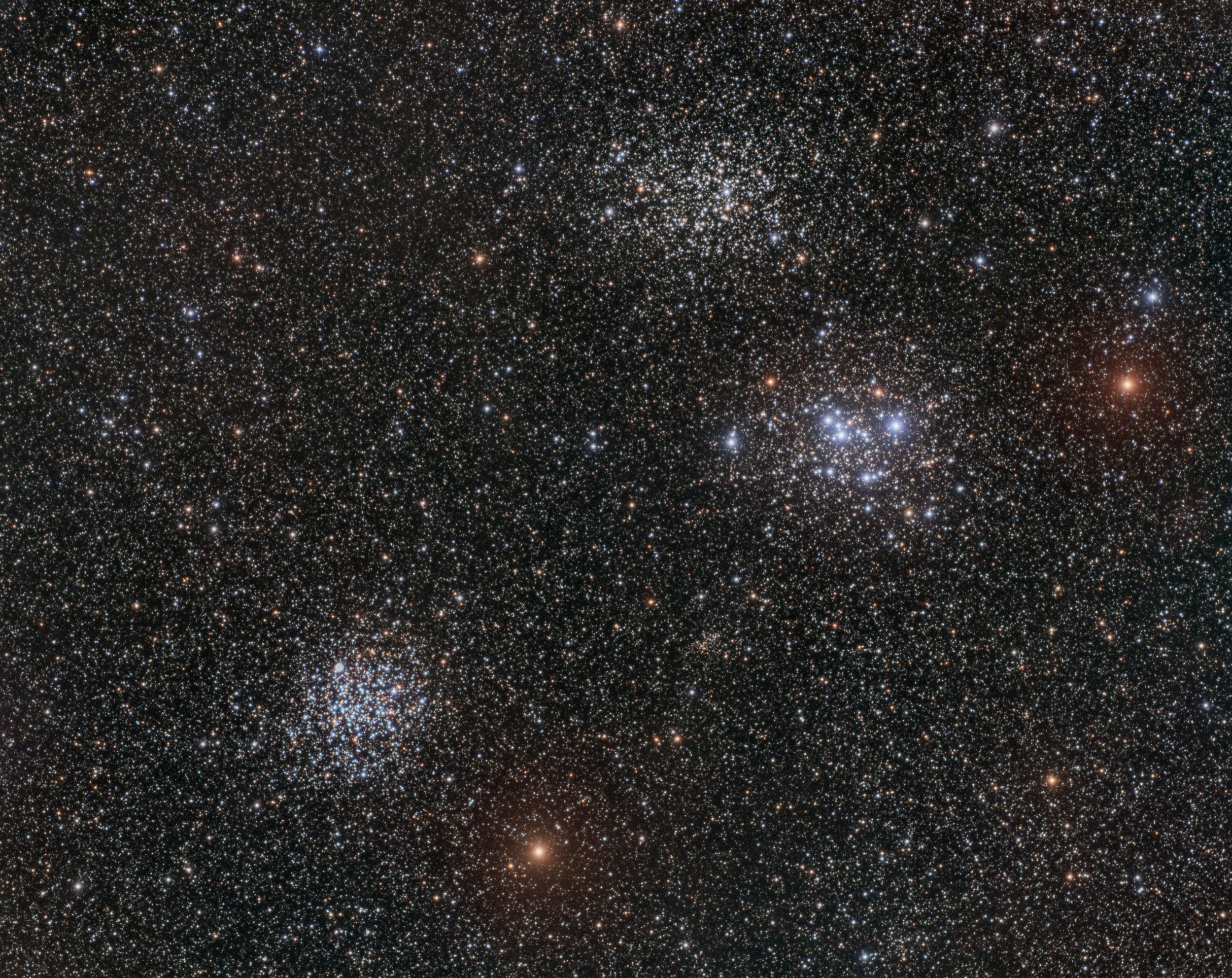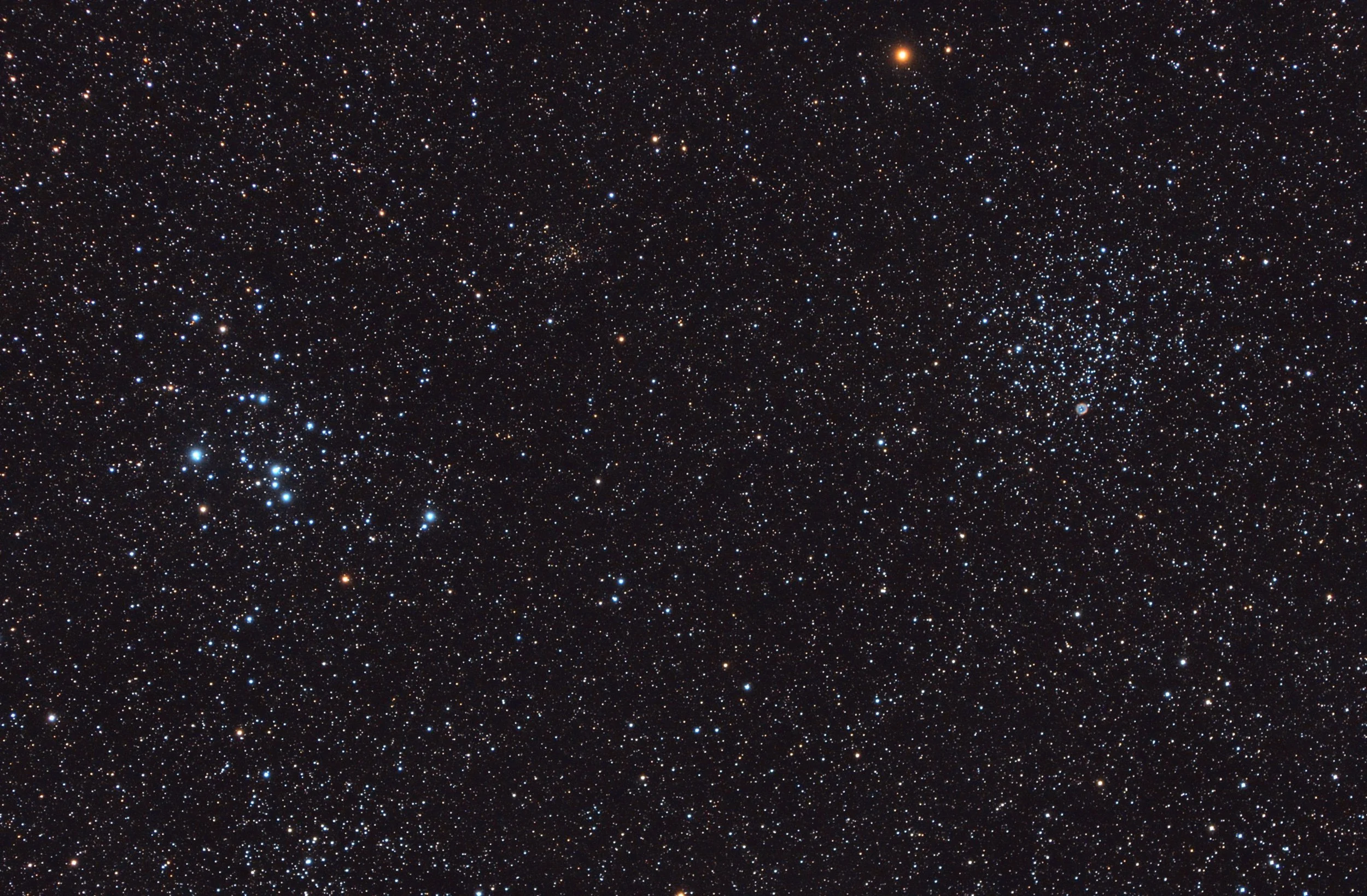
AAPOD2 Image Archives
Three Clusters in Puppis
Image Description and Details :
Three open star clusters are seen here in the constellation Puppis, east of the bright star Sirius. To the lower left is Messier 46 or M46, 5000 light years away. M46 has about 500 stars estimated to be about 250+ million years old. The planetary nebula NGC 2438 lies on the northeast edge of M46 (about the 11 o’clock position in the image) but is most likely not part of the cluster.
Just one degree west-northwest of M46 (to the right in the image) lies another open star cluster Messier 47 or M47. M47 is much younger in age, about 78 million years old and is 1600 light years distant. There are also about 500 stars, mostly high temperature giant blue stars, reflecting the cluster’s young age, as well as some red giants.
NGC 2423 is the open cluster just above M47 in the image and is much closer to us. It contains several red giant stars, at least one of which has an orbiting planet discovered in 2007. The distance to that system is about 2500 light years.
Capture info:
Location: Orion’s Belt Remote Observatory, Mayhill NM
Telescope: Takahashi FSQ 106N
Camera: SBIG STXL 16200
Mount: Paramount MX+
Data: RGB 3,2,2.5 hours
Processing: Pixinsight 1.8.8.7
Copyright: Dave Doctor
Double cluster in Puppis (M46 and M47) and their little companion NGC 2438 (with particular)
Image Description and Details :
In the direction of the constellation of the Puppis there is this pair of open clusters cataloged by Charles Messier as M46 and M47. On closer inspection, in the direction of M46 there is a very small planetary nebula cataloged as NGC 2438, the remnant of a stellar explosion that left a white dwarf at its center. NGC 2438 is 2900 light years away from us and has an extension of "just" 4.5 light years.
Scope: Skywatcher ED80 reduced @480mm, f6.0
Camera: Qhy168c @-15°C, gain 10, offset 50, with reducer DELUXE Artesky 0.8x and Optolong L_Pro filter
Guide: finderscope Konus 50/180 and Asi224Mc
Mount: Skywatcher Eq6r Pro
Accessories: Zwo EAF
Management system: Raspberry PI4 with Stellarmate OS remotely controlled with Windows 10
Acquisition software: Kstars/Ekos
Frames: 18x300" calibrated with flat, dark and bias
Stacking and post-production softwares: AstroPixelProcessor, Pixinsight and Photoshop
Location: Ferrara (Italy), Bortle 6, SQM 19,22
Copyright: Massimo Di Fusco


